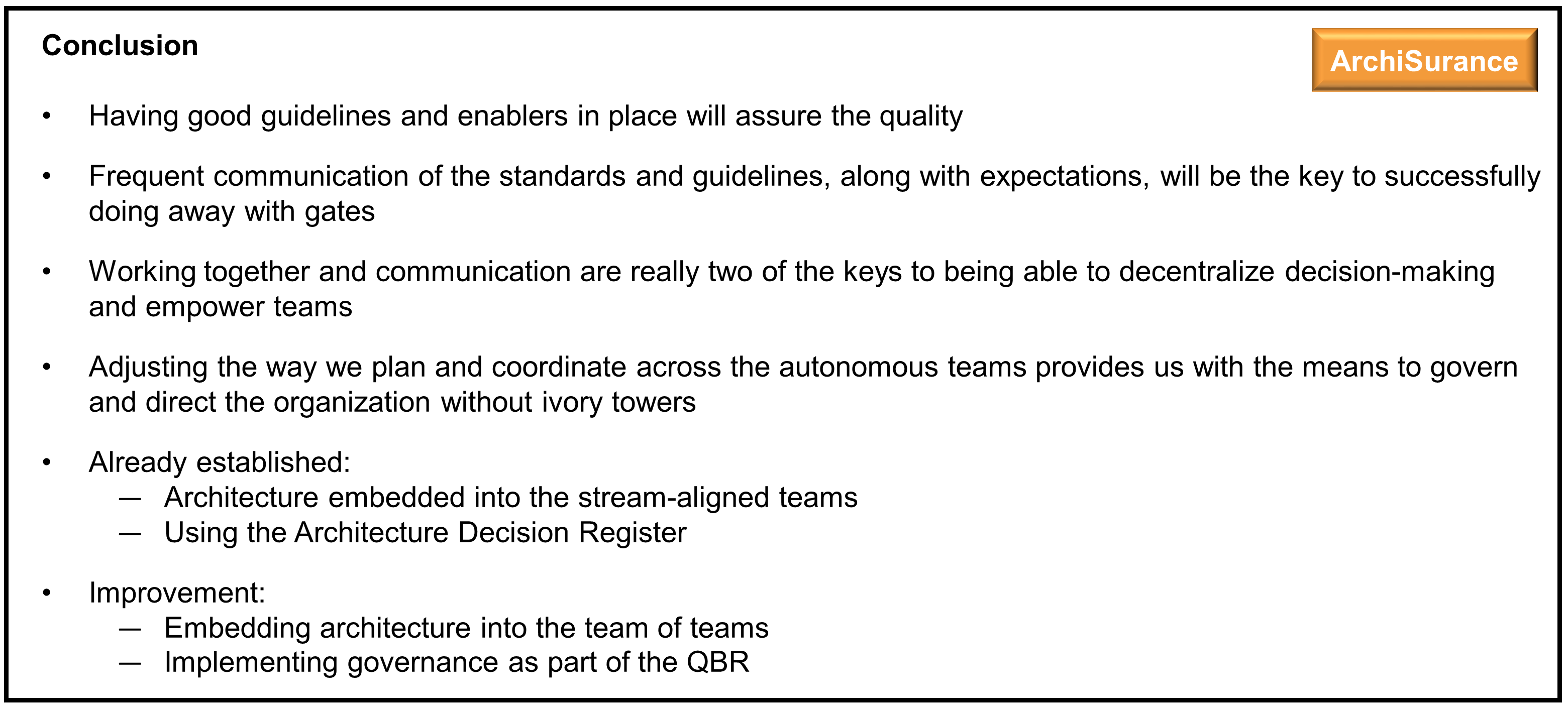Bonus Section F: The Stakeholder Meeting on Architecture Governance
Pre-Work for the Stakeholder Meeting on the Architecture Governance Structure:
First, Terri brainstorms a draft list of questions that a governance body might ask to ensure Architecture Compliance is being followed. Then she takes a look at the principles that have already been established and checks to see if there are other questions that need to be asked to ensure compliance to the principles; see Governance Questionnaire for the governance questionnaire. Terri makes a note to herself to go back and look at the TOGAF Standard recommendations for writing up principles.[1] She might want to add additional information like the rationale and implications to help clarify the principles.
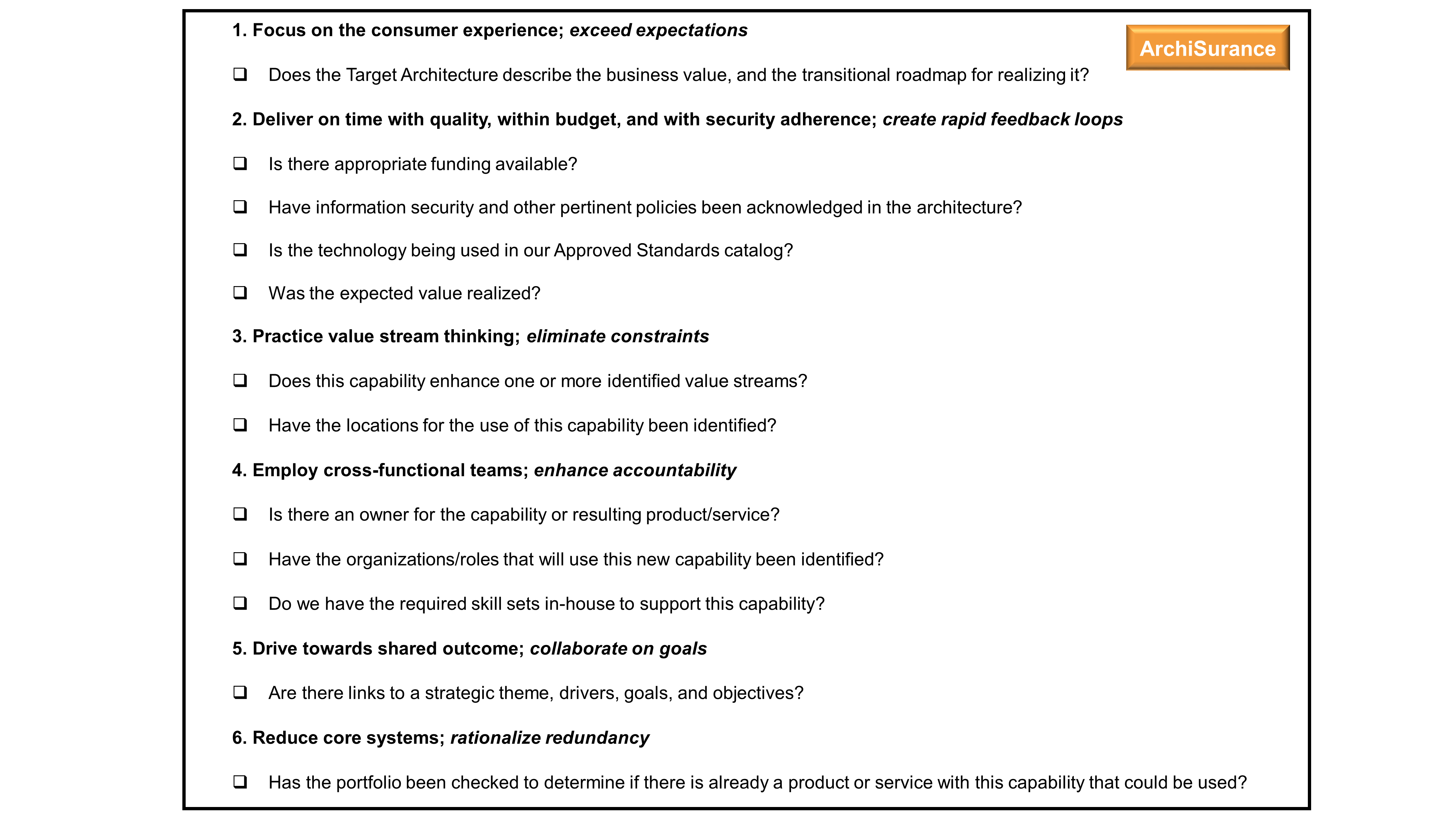
Next, she includes a list of the suggested catalogs and an operating charter; see Suggested Catalogs under Governance and Operating Charter for Governance at the Team of Teams Level.
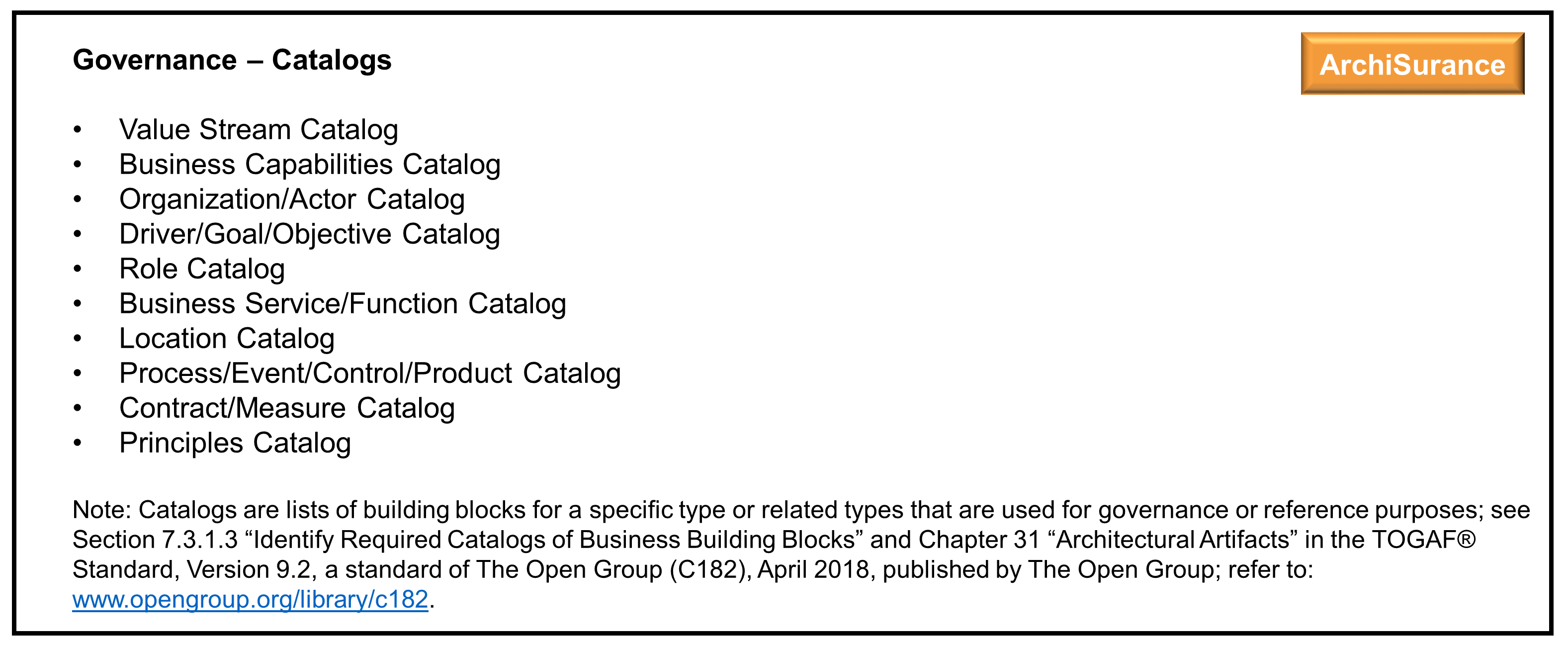
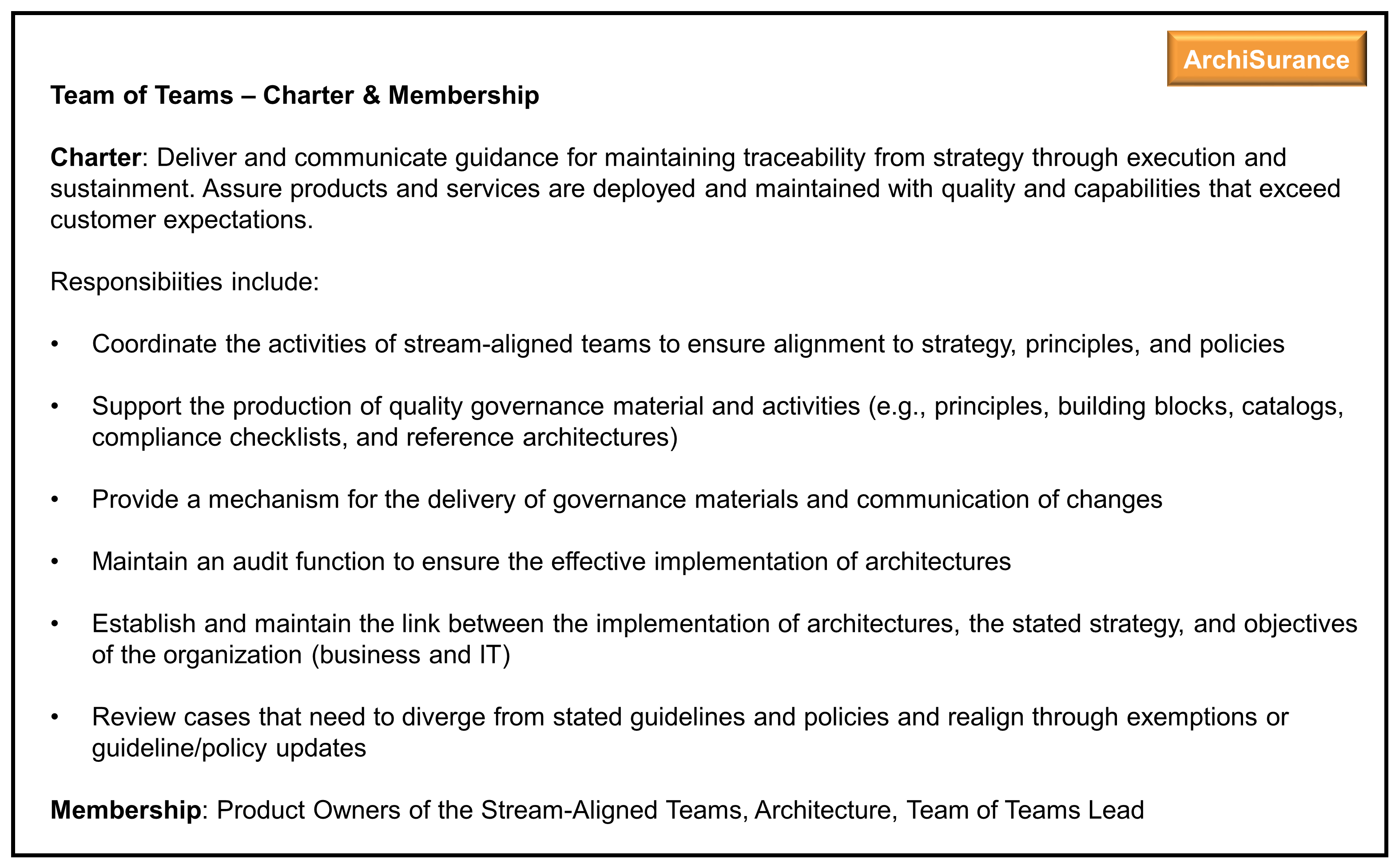
Terri also decides to include a slide (see New Organization Map) to show the team of team’s organization from Kathleen’s kickoff presentation with the mapping of the stream-aligned teams. This would get the stakeholders talking about the new way of working across value streams and could bring out some of the potential barriers.
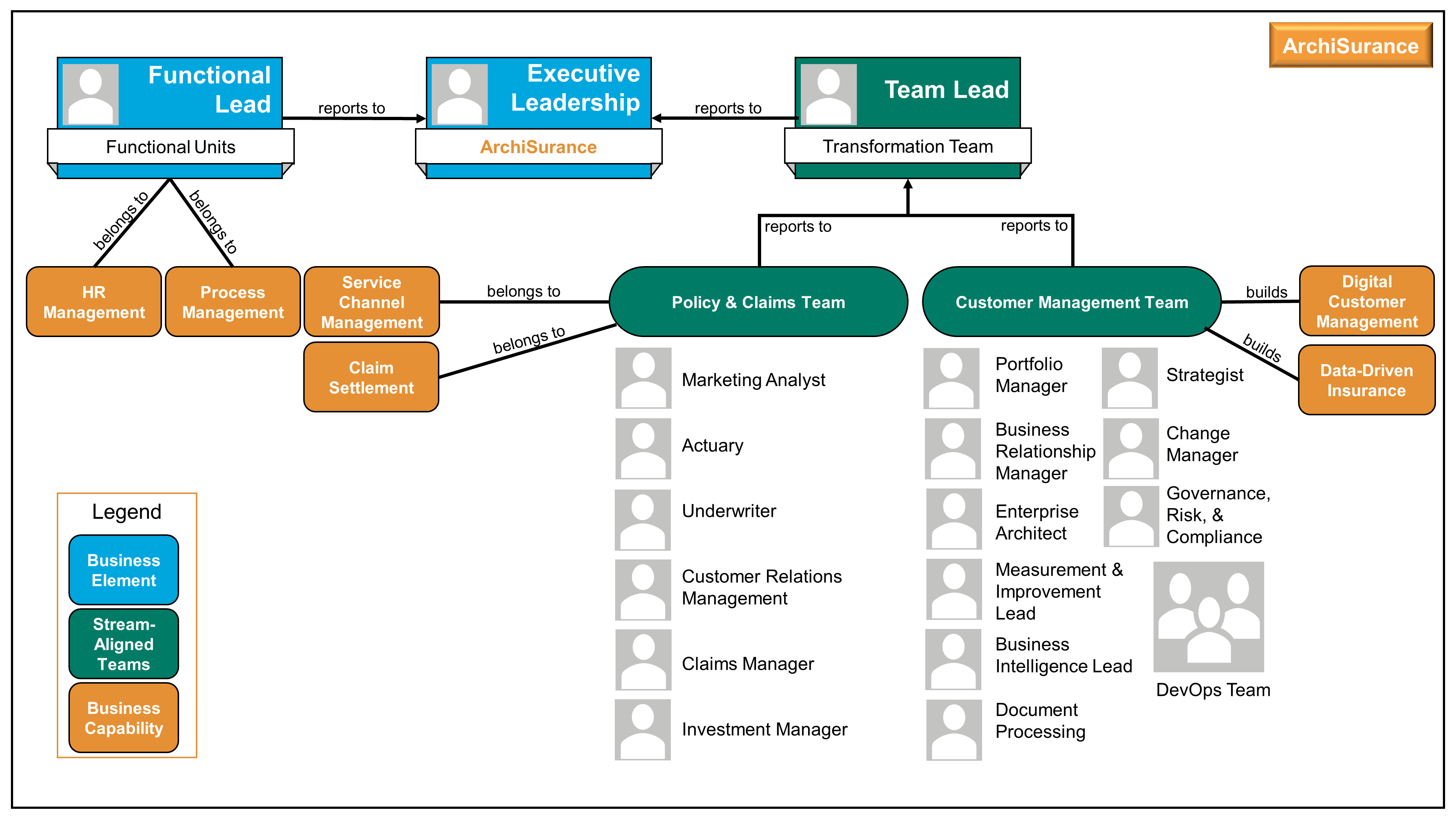
After all her research over the last few years as well her most recent investigations for her new role in implementing a new Agile governance structure, it is clear to Terri that bringing Enterprise Architecture into the QBR is the best course of action. Enterprise Architecture sits in a really good position for bridging the gap between technology and business, with both the business and the technical insights required to blend the company’s strategy, and really needs to have oversight for the entire product/service lifecycle and its direction. They are also responsible for building the technology enablers to help deliver business solutions in the most efficient way. The QBR is the best place to track the adherence to standards and guidance by the teams across the organization; see Operating Charter for Governance at the QBR (Enterprise) Level.
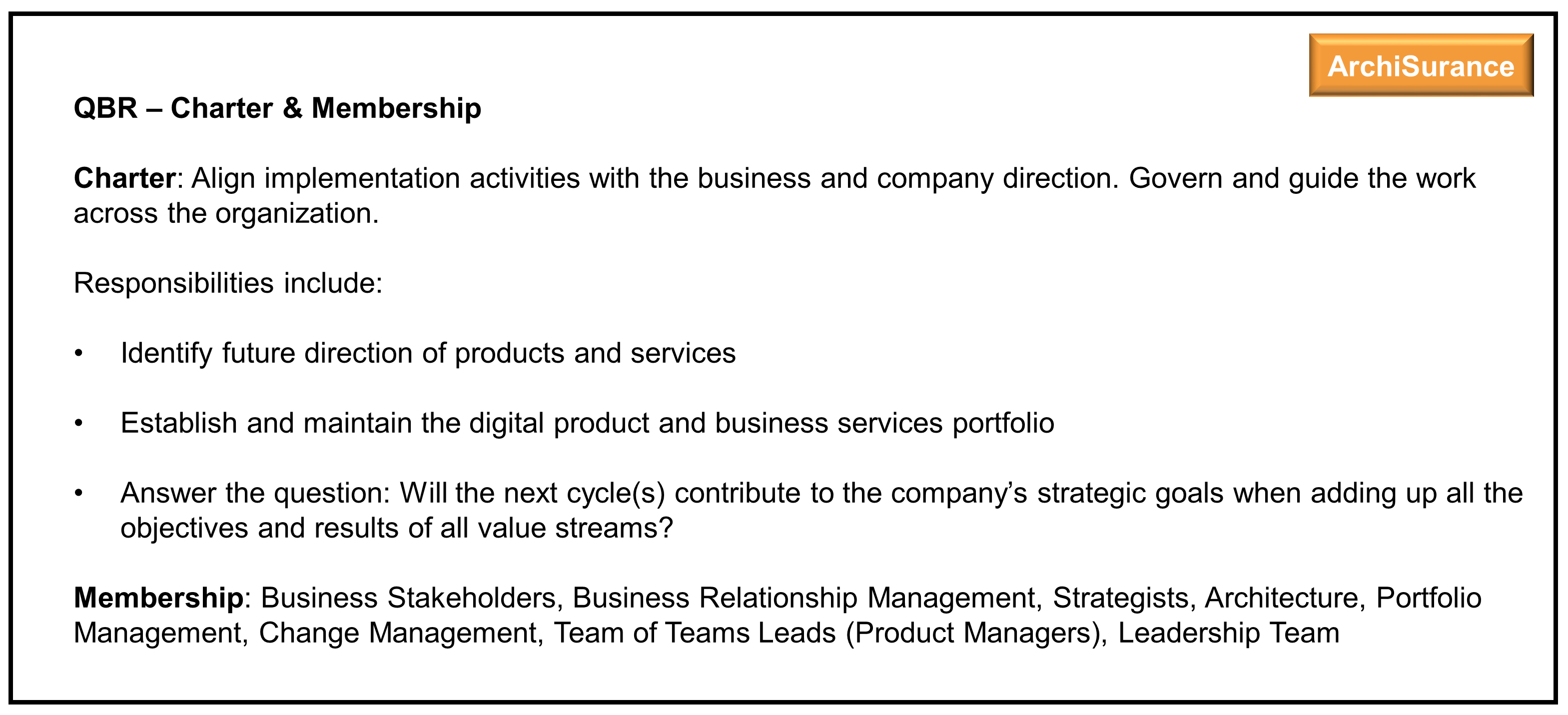
Terri’s concluding slide brings it all together, see Conclusion of the Governance Investigation.
